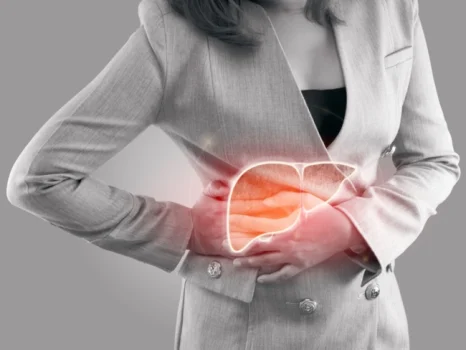Liver Cystic Tumour Specialist in Singapore
Overview: What Is a Liver Cyst or Liver Cystic Tumour?
A liver cyst refers to a fluid-filled sac that develops within the liver. These cysts are often detected incidentally during imaging tests for unrelated conditions. The majority are benign (non-cancerous) and are classified as simple liver cysts.
However, certain cysts may display features that raise suspicion for malignancy (cancer). These are referred to as liver cystic tumours and require further evaluation by a liver specialist.
Liver cysts may vary significantly in size, ranging from a few millimetres to more than 20 centimetres. They can present as solitary or multiple cysts.

Causes of Liver Cysts
In many cases, the exact cause of a liver cyst is unknown (idiopathic). However, the following factors are known to contribute to the development of liver cysts:
- Congenital factors (present from birth)
- Hereditary conditions, such as polycystic liver disease
- Genetic mutations
- Parasitic infections, including hydatid disease (Echinococcus)
- Cystic liver tumours, such as biliary cystadenomas and cystadenocarcinomas
Who Is at Risk?
Liver cysts are more commonly observed in:
- Females
- Individuals aged 30 to 70 years
- Persons with a family history of polycystic liver disease
When Should You Be Concerned?
While most liver cysts are harmless, the following characteristics may suggest a more serious condition, such as a liver cystic tumour:
- Irregular or lobulated borders
- Thickened or enhancing cyst walls
- Internal nodules or solid components
- Thick internal septa (walls within the cyst)
- Rapid enlargement over time
- Associated symptoms such as abdominal discomfort, fever, or weight loss
These features may be seen in rare conditions such as biliary cystadenoma or cystadenocarcinoma, which may require surgical treatment.
Symptoms of Liver Cysts and Cystic Tumours
Small liver cysts are often asymptomatic. However, larger cysts or cystic tumours may cause pressure-related symptoms, including:
- Dull ache or discomfort in the upper right abdomen
- Sensation of abdominal fullness or bloating
- Visible or palpable abdominal mass
- Nausea or vomiting
- Feeling full after eating small amounts (early satiety)
- Shortness of breath, if the cyst compresses nearby organs
- Fever and pain, if the cyst becomes infected
Diagnostic Evaluation
A comprehensive evaluation by a liver specialist may include:
- Ultrasound scan to assess size and fluid content
- CT scan for detailed cross-sectional imaging
- MRI with contrast to evaluate internal structures and rule out malignancy
- Blood tests, including tumour markers such as CEA and CA 19-9
Further tests may be advised based on the imaging findings and clinical history.
Treatment Options
Observation and Monitoring
- Asymptomatic simple liver cysts generally do not require intervention.
- Periodic imaging surveillance (e.g. ultrasound or MRI) may be recommended to monitor for changes in size or structure.
Surgical Management
Surgery may be considered in the following cases:
- Symptomatic large cysts, which may be managed with laparoscopic cyst fenestration, a minimally invasive procedure to drain the cyst and remove part of its wall.
- Cystic tumours with suspicious or malignant features, which may require surgical resection (removal of part of the liver).
- In rare instances of advanced polycystic liver disease, liver transplantation may be discussed.
All surgical recommendations are made based on a detailed assessment of the cyst’s characteristics, patient symptoms, and overall health.
Liver Specialist in Singapore – Dr. Lee Lip Seng
Dr. Lee Lip Seng is a Senior Consultant Surgeon in Hepatopancreatobiliary (HPB) practising in Singapore. He has clinical experience managing a wide range of liver conditions, including liver cysts and cystic tumours.
His practice involves:
- Evaluation and diagnosis of liver cysts using imaging modalities such as ultrasound, CT, and MRI
- Management strategies aligned with current clinical guidelines and patient-specific considerations
- Minimally invasive techniques such as laparoscopic and robotic-assisted liver surgery where appropriate
- Coordinated care tailored to individual patient needs, including surgical and non-surgical options
Patients with liver cysts or cystic tumours may benefit from a multidisciplinary assessment to determine the most appropriate next steps based on imaging findings, symptoms, and medical history.
Frequently Asked Questions (FAQs)
Are liver cysts dangerous?
Most liver cysts are benign and do not pose a health risk. However, cysts with certain features or symptoms may require further assessment.
Can liver cysts become cancerous?
In rare cases, certain cystic tumours like biliary cystadenomas may undergo malignant transformation. Regular monitoring is important if abnormal features are present.
Is surgery always necessary for liver cysts?
No. Only symptomatic cysts or those with malignant potential typically require surgical intervention. Many liver cysts can be safely monitored over time.







